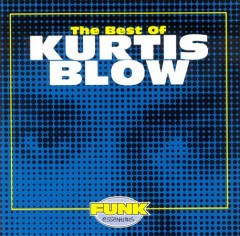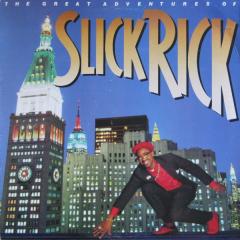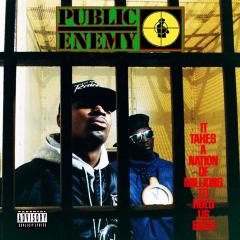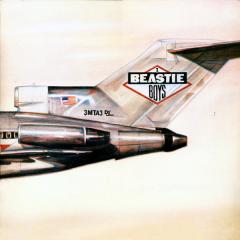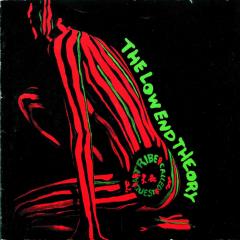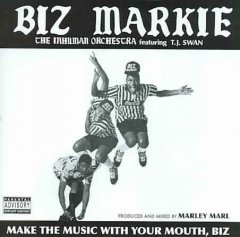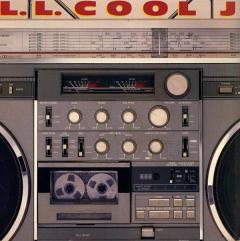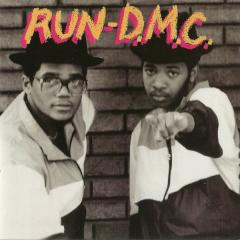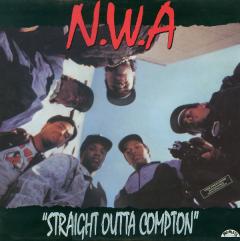Hip-hop, defined by Britannica as the "cultural movement that attained widespread popularity in the 1980s and ’90s; also, the backing music for rap, the musical style incorporating rhythmic and/or rhyming speech that became the movement’s most lasting and influential art form", encompasses more than just music.
So, in the other words of KRS-One: “Rap is something you do, Hip Hop is something you live."
This is a list of so-called "Old School" and "Golden Age" Rap. Read More: 21 Rappers Explain What Hip-Hop Means To Them - XXL | https://www.xxlmag.com/21-rappers-hip-hop-means-interview/?utm_source=tsmclip&utm_medium=referral
FYI: More streaming and downloadable music is available on Hoopla and Freegal (though not currently much that would fit the time period of this list).
Boombox 1 "features some of the many innovative underground first-wave of rap records made in New York in the period 1979-82, all released on small, independent, often family-concern record companies, at a time when hip-hop music still remained under the radar."
"The 1980 single, 'The Breaks', was the first certified gold record rap song for Hip Hop."
Sugar Hill Records released its first record, "Rapper's Delight", that became the first Top 40 hip-hop single in 1979. Later in 1982, it released the highly influential "The Message", the first prominent hip-hop song to provide a social commentary.
"Boombox 2 is a new selection of early rap music from the period 1979-83,with barely a household name in sight.Featured here are some the earliest hip-hop records that came out of NewYork City following the enormous commercial success of the first ever rap record, Rapper's Delight by The Sugarhill Gang, in September 1979."
"The murder of DJ Scott La Rock had a profound effect on KRS-One, resulting in a drastic rethinking of his on-record persona. He re-emerged the following year with By All Means Necessary, calling himself the Teacher and rapping mostly about issues facing the black community. His reality rhymes were no longer morally ambiguous, and this time when he posed on the cover with a gun, he was mimicking a photo of Malcolm X. As a social commentator, this is arguably KRS-One's finest moment." - Scott Huey
"This debut album revolutionized hip-hop in several respects. Although they weren't the first Hispanic rappers, nor the first to mix Spanish and English, they were the first to achieve a substantial following, thanks to their highly distinctive sound. Along with Beastie Boys and Public Enemy, Cypress Hill were also one of the first rap groups to bridge the gap with fans of both hard rock and alternative rock. And, most importantly, they created a sonic blueprint that would become one of the most widely copied in hip-hop. In keeping with their pro-marijuana stance, Cypress Hill intentionally crafted their music to sound stoned—lots of slow, lazy beats, fat bass, weird noises, and creepily distant-sounding samples. The surreal lyrical narratives were almost exclusively spun by B Real in a nasal, singsong, instantly recognizable delivery that only added to the music's hazy, evocative atmosphere."—Steve Huey
"Golden Age rapper who carved a niche with his sly, drawling delivery and aural collage of storytelling, exaggeration, wit, vulgarity and misogyny; filled with vivid detail and witty asides...his cartoonish sense of humor influenced countless other rappers." - Steve Huey
This mix of rap and rock/metal (produced by Rick Rubin and Russell Simmons' Def Jam, which had previously flirted with this sound on Run-D.M.C.'s Raising Hell) has often been misunderstood as condoning the 'frat-bro' buffoonery it so aptly apes. Regardless, it was the first number one album in hip-hop history. - Mark Coleman
"This debut captures the Big Daddy Kane who rocked the house at hip-hop clubs and verbally cut up any and all comers in the late '80s with his articulate precision and locomotive power -- the Big Daddy Kane who became an underground legend, the Big Daddy Kane who had the sheer verbal facility and razor-clean dexterity to ambush any MC and exhilarate anyone who witnessed or heard him perform." - Stanton Swihart
"One of the closest and most brilliant fusions of jazz atmosphere and hip-hop attitude ever recorded, the rapping by Q-Tip and Phife Dawg could be the smoothest of any rap record ever heard; the pair are so in tune with each other, they sound like flip sides of the same personality, fluidly trading off on rhymes, with the former earning his nickname (the Abstract) and Phife concerning himself with the more concrete issues of being young, gifted, and black." - John Bush
Best known for his 1989 single, "Just a Friend", the "Clown Prince of Hip-hop" and his beat-boxing is featured here in this "important look at hip-hop's earlier days".
"The record that ushered in hip-hop's modern era...Rakim basically invents modern lyrical technique over the course of Paid in Full, with his complex internal rhymes, literate imagery, velvet-smooth flow, and unpredictable, off-the-beat rhythms."
"Run-D.M.C. was the first rap act to produce cohesive, fully realized albums, and LL Cool J was the first to follow in their footsteps. LL was a mere 17 years old when he recorded his classic debut album Radio, a brash, exuberant celebration of booming beats and B-boy attitude that launched not only the longest career in hip-hop, but also Rick Rubin's seminal Def Jam label." - Steve Huey
While their third record, Raising Hell, is the breakthrough that made them an undeniable force, this debut announced a change to the genre. "Prior to this, rap felt like a block party -- the beats were funky and elastic, all about the groove. Run-D.M.C. hit hard. The production is tough and minimal, built on relentless drum machines and Jam Master Jay's furious scratching, mixing in a guitar riff or a keyboard hit on occasion." - Stephen Thomas Erlewine
The first album from the Native Tongues posse, their taste for jazzy horn samples helped kickstart the entire jazz-rap movement...The lyrics were often as cerebral as the music was adventurous and eclectic, appealing to the mind rather than the gut -- and the fact that rap didn't necessarily have to sound as though it were straight off the streets was fairly revelatory at the time.... To modern ears, it will likely sound somewhat dated.... But it is possible to hear the roots of hip-hop's intellectual wing, not to mention a sense of fun and positivity that hearkened back to the music's earliest Sugar Hill days -- and that's why it ultimately holds up." - Steve Huey
"While not quite the first, it established gangsta rap -- and, moreover, West Coast rap in general -- as a commercial force, going platinum with no airplay and crossing over with shock-hungry white teenagers. Unlike Ice-T, there's little social criticism or reflection on the gangsta lifestyle. All of that directionless rebellion and rage produces some of the most frightening, visceral moments in all of rap, especially the amazing opening trio of songs, which threaten to dwarf everything that follows." - Steve Huey

